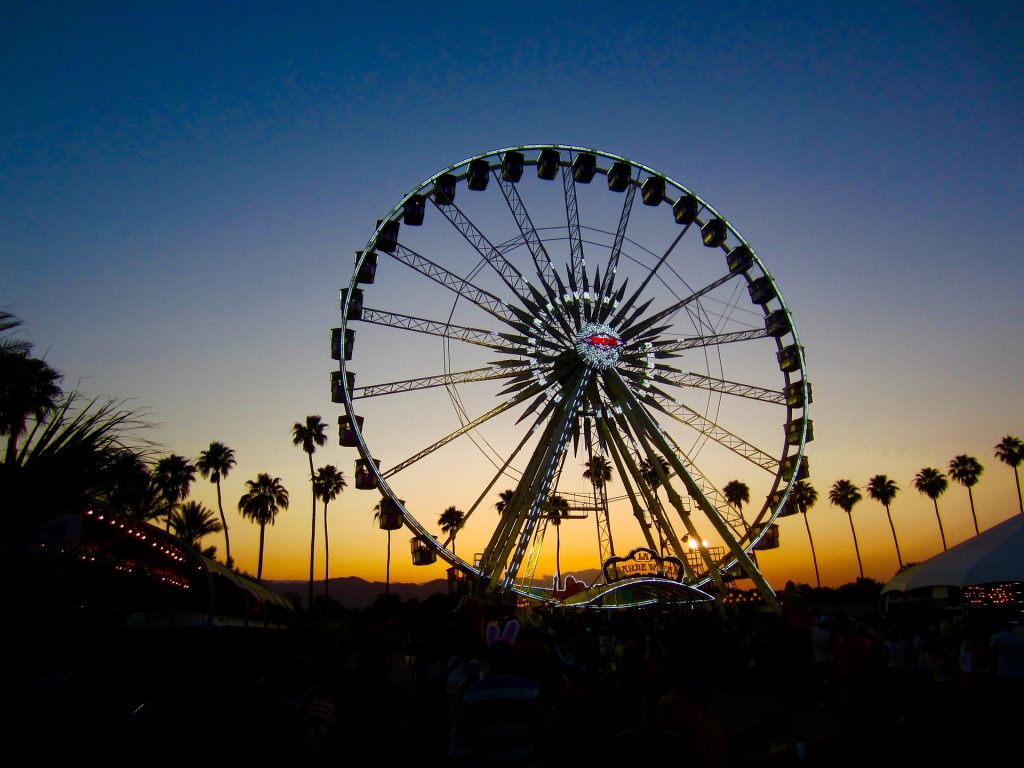
It’s that time of year again when more than 100,000 music fans, celebrities, and social media influencers head to Indio, California for the melting pot of music performances, exclusive parties, and brand activations that is Coachella music festival. Often referred to as ‘Brandchella’ or ‘The Super Bowl of Social Media Advertising,’ Coachella has become the place to be seen by not only festival go-ers but also brands across any and all industries.
This year, brands at the festival have sharpened their experiential marketing strategies, creating immersive experiences to connect with established and potential consumers alike on a deeper level. As we head out of Weekend One of Coachella and into Weekend Two, here is how some big-name brands are implementing experiential marketing at Coachella 2019.
Donald Glover x Adidas Nizza
Possibly one of the most headline-making experiential marketing tactics during Weekend One was from Adidas’ collaboration with Donald Glover, also known by his stage name Childish Gambino. During the beginning of Glover’s performance that closed the first night of Coachella, Glover gave a few lucky festival attendees free pairs of his unreleased shoes from the Donald Glover x Adidas Nizza line. In a creative spin on traditional giveaways, Glover used iOS AirDrop to send fans at random a photo of the shoe which, if accepted, could be traded in for free shoes. The fans who accepted the shoes signed a contract to wear the shoes all weekend long at the festival, which is experiential marketing at its finest.
YSL Beauty
Although many brand activations occur on the grounds of Coachella, YSL Beauty created an immersive, off-site experience for festival go-ers as they make their way to the desert at a gas station-like pop-up shop off Route 111. As influencer marketing is becoming a top strategy to reach millennials, the makeup brand turned to social media influencer Kaia Gerber to generate YouTube and Instagram content to raise awareness for the pop-up shop. At the activation, visitors could use virtual reality mirrors to ‘try-on’ makeup looks, shop at product vending machines, and, of course, take some of their first Insta-worthy festival photos at the vintage gas station setup. This experiential marketing strategy allowed YSL to connect with consumers in a memorable, creative way before they reach Indio.
HP
Although Coachella is all about music, fashion, and beauty, brands across every industry have taken to the music festival to create experiences for consumers, including tech giant HP. As one of the festival’s sponsors, HP is back for its third year with its Antarctic Dome, an air-conditioned projection dome. The 360-degree experience features headliner Rüfüs Du Sol’s hit ‘Underwater’ playing while attendees walk through the dome complete with artistic projections overhead, making visitors lose a sense of reality and feel like they are inside a music video. The Antarctic Dome is fully powered by HP technology, giving consumers the chance to see HP in action while creating an experience that resonates with the interests of festival go-ers.
BMW
BMW is another brand that decided to provide an immersive experience for visitors outside of the festival grounds. In collaboration with singer-songwriter Khalid, BMW Palm Springs turned their dealership into a festival pit stop to create its #RoadToCoachella event. This experiential marketing effort allowed festival attendees to get up close and personal with their BMW I series while connecting fans to Khalid. The event featured food trucks, a claw machine with custom bandanas, cars, and a Khalid Meet & Greet. Using Coachella and one of its headliners to attract new business and celebrate BMW I allowed BMW to gain exposure through one of the biggest social media events of the year with its own hashtag.
No matter the industry or event type, all of these brands at Coachella are working toward a common goal: to provide consumers with meaningful experiences that connect them to the brand. From large-scale companies to local organizations, experiential marketing has been a trend that is making waves in the marketing world. When you insert your brand into the lifestyles and interests of your consumers, you are able to build a connection that goes further than just selling a product or service, allowing consumers to interact with your brand in real life situations and see what it stands for face to face.
